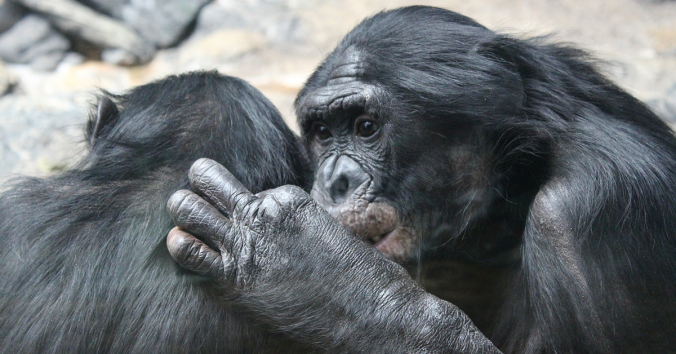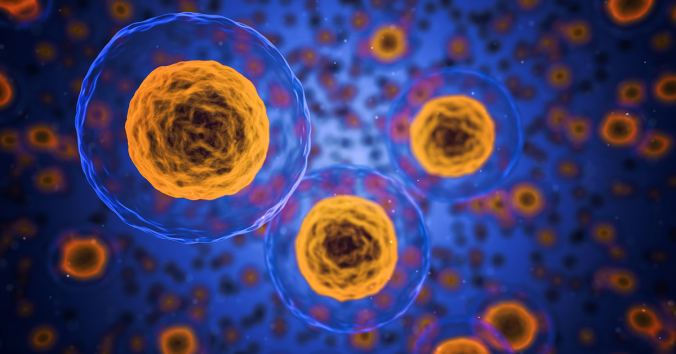When philosophers are asked what method we use when we philosophize, we are happy to answer: our most important method is conceptual analysis. We apply conceptual analysis to answer philosophical questions such as “What is knowledge?”, “What is justice?”, “What is truth?” What we do is that we propose general definitions of the concepts, which we then fine-tune by using concrete examples to test that the definitions really capture all individual cases of the concepts and only these.
The problem is that both those who ask for the method of philosophy and those who answer “conceptual analysis” seem to assume that philosophy is not challenged by deeply disturbing problems, but defines concepts almost routinely. The general questions above are hardly even questions, other than purely grammatically. Who lies awake wondering “What is knowledge, what is justice, what is truth, what is goodness, what is…?”
In order to get insomnia from the questions, in order for the questions to become living philosophical problems, in order for us to be disturbed by them, we need more than only generally formulated questions.
Moreover, if there was such a thing as a method of answering philosophical questions, then the questions should already have been answered. I mean, if we since the days of Socrates had a method that answers philosophical “What is?”-questions by defining concepts, then there cannot be many questions left to answer. At most, we can refine the definitions, or apply the method to concepts that did not exist 2600 years ago. Basically, philosophy should not have many questions left to be challenged by. Since ancient times, we have a well-proven method!
To understand why philosophers continue to wonder, we need to understand why questions that superficially sound so uninteresting that we fall asleep can sometimes be so deeply perplexing that we lie awake thinking. Let me give you an example that gives a glimpse of the depths of philosophy, a glimpse of that disturbing “extra” that keeps philosophers awake at night.
The example is a “Swedish” disease, which has attracted attention around the world as something very strange. I am thinking of what was first called apathy in refugee children, but which later got the name resignation syndrome. The disease affects certain groups of children seeking asylum in Sweden. Children from the former Yugoslavia and from Central Asian countries of the former Soviet Union have been overrepresented. The children lose physical and mental functions and in the end can neither move nor communicate. They become bedridden, do not respond to pain and must be fed by tube. More than 1000 children have been affected by the disease in Sweden since the 1990s.
Confronted with this disease in refugee children, it may seem natural to think that the condition is reasonably caused by traumatic experiences in the home country and during the flight, as well as by the stress of living under deportation threat. It is not unreasonable to think so. Trauma and stress probably contribute to the disease. There is only one problem. If this were the cause, then resignation syndrome should occur in refugee children in other parts of the world as well. Unfortunately, refugee children with traumatic experiences and stressful deportation threats are not only found in Sweden. So why are (certain groups of) refugee children affected by the syndrome in Sweden in particular?
What is resignation syndrome? Here we have a question that on the surface does not sound more challenging than any other generally formulated “What is?”-question. But the question is today a challenging philosophical problem, at least for Karl Sallin, who is writing his dissertation on the syndrome here at CRB, within the framework of the Human Brain Project. What is that “extra” element that makes the question philosophically challenging for Karl Sallin?
It may seem natural to think that the challenging aspect of the question is simply that we do not yet know the answer. We do not know all the facts. It is not unreasonable to think so. Lack of knowledge naturally contributes to the question. Again, there is only one problem. We already consider ourselves knowing the answer! We think that this extreme form of despair in refugee children must, of course, be caused by traumatic experiences and by the stress that the threat of deportation entails. In the end, they can no longer bear it, but give up! If this reasonable answer were correct, then resignation syndrome should not exist only in Sweden. The philosophical question thus arises because the only reasonable answer conflicts with obvious facts.
That is why the question is philosophically challenging. Not because we do not know the answer. But because we consider ourselves to know what the answer must be! The answer seems so reasonable that we should hardly need to do more research on the matter before we take action by alleviating the children’s stressful situation, which we think is the only possible cause of the syndrome. And that is what happened…
For some years now, the guidelines for Swedish health care staff have emphasized the family’s role in recovery, as well as the importance of working for a residence permit. The guidelines are governed by the seemingly reasonable idea that children’s recovery depends on relieving the stress that causes the syndrome. Once again, there is only one problem. The guidelines never had a positive effect on the syndrome, despite attempts to create peace and stability in the family and work for a residence permit. The syndrome continued to be a “Swedish” disease. Why is the condition so stubbornly linked to Sweden?
Do you see the philosophical problem? It is not just about lack of knowledge. It is about the fact that we already think we have knowledge. The thought that the cause must be stress is so obvious, that we hardly notice that we are thinking it. It seems immediately real. In short, we have got stuck in our own thoughts, which we repeat again and again, even though we repeatedly clash with obvious facts. Like a mosquito trying to get out of a window, but just crashing, crashing, crashing.
When Karl Sallin treats the issue of resignation syndrome as a philosophical issue, he does something extremely unusual, for which there are no routine methods. He directs his attention not only outwards towards the disease, but also inwards towards ourselves. More empirical research alone does not solve the problem. As little as continuing to collide with the glass pane solves the mosquito’s problem. We need to stop and examine ourselves.
This post has now become so long that I have to stop before I can describe Karl Sallin’s dissolution of the mystery. Maybe it is good that we are not rushing forward. Riddles need time, which our impatient intellect rarely gives them. The point about the method of philosophy has hopefully become clear. The reason why philosophers analyse concepts is that we humans sometimes get caught up in our own concepts of reality. In this case, we get stuck in our concept of resignation syndrome as a stress disorder. Perhaps I can still mention that Karl Sallin’s conceptual analysis of our thought pattern about the syndrome dissolves the feeling of being faced with an incomprehensible mystery. The syndrome is no longer in conflict with obvious facts. He also shows that our thought patterns may have contributed to the disease becoming so prominent in Sweden. Our publically stated belief that the disease must be caused by stress, and our attempts to cure the disease by relieving stress, created a cultural context where this “Swedish” disease became possible. The cultural context affected the mind and the brain, which affected the biology of the body. In any case, that is what Karl Sallin suggests: resignation syndrome is a culture-bound disease. This unexpected possibility frees us from the thought we were stuck in as the only alternative.
So why did Socrates ask questions in Athens 2600 years ago? Because he discovered a method that could answer philosophical questions? My guess is that he did it for the same reason that Karl Sallin does it today. Because we humans have a tendency to imagine that we already know the answers. When we clearly see that we do not know what we thought we knew, we are freed from repeatedly colliding with a reality that should be obvious.
In philosophy, it is often the answer that is the question.
Sallin, K., Evers, K., Jarbin, H., Joelsson, L., Petrovic, P. (2021) Separation and not Residency Permit Restores Function in Resignation Syndrome: A Retrospective Cohort Study. Eur Child Adolesc Psychiatry, 10.1007/s00787-021-01833-3
Sallin, K., Lagercrantz, H., Evers, K., Engström, I., Hjern, A., Petrovic, P. (2016) Resignation Syndrome: Catatonia? Culture-Bound? Frontiers in Behavioral Neuroscience, 10:7. 10.3389/fnbeh.2016.00007
This post in Swedish
We challenge habits of thought














Recent Comments